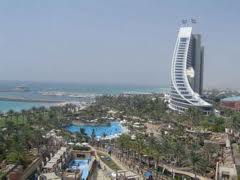Executive summary
This portfolio will be concentrating on the tourism marketing and communication tools used by Dubai at both national and international level. To be attractive and remain competitive in the international marketplace, the Dubai tourism board must develop and promote innovative tourist products.
Therefore, it is essential that factors that influence both internal and external environment of this tourist destination be looked at. A succinct analysis of Dubai indicate that despite the economic, political and social upheavals recently experienced in the Arab world as well as the impending competition from closer tourist destinations, Dubai has managed to keep its image as the safest tourist destination. As a result, Dubai has managed to attract large numbers of tourists. The major concern is the sustainability of this trend.
The responsibilities of the Department of Tourism Commerce and Marketing Board (DTCM) as the principal marketing authority of Dubai will clearly be illustrated in this portfolio. A close look at the various marketing and communication tools used by DTCM will substantiate the role they have played in successfully driving their marketing strategies.
A brief summary of the strengths and weaknesses, future recommendations for marketing communication strategy in connection to micro and macro environment will be suggested before the conclusions are drawn.
Introduction
As the awareness of tourist destination and accessibility increases tourists have wide variety of destinations to choose from. Therefore, for any particular country or city to remain the destination of choice, they must create a unique products and identity that distinguishes them from other destinations. (Kotler et al. 2005, p.89).
While some destinations have restricted their branding efforts exclusively on logo designs, others have broadened their branding efforts to include social and emotional values. These values are perceived to boost the quality of the destination (McCabe 2009, p.69).
This is essential as the selection of the holiday destination has become a lifestyle for travelers who are leaned towards spending their income on precious holiday time. Therefore, countries are embracing marketing and communication tools as well as developing appropriate branding strategies that will enable them remain competitive within the international marketplace (Laws 1991, p.31).
This portfolio will be centering on Dubai. Dubai is one of the emirates that are leading the transformation of the unions’ tourism. The success of any destination is not determined by not only the more controllable micro-environmental factors but also the uncontrollable macro-environmental factors (Kotler et al. 2002, p.57).
The portfolio will begin by the analysis of the SWOT and PESTEL to provide a general idea of the Dubai global positioning. Besides, the portfolio will examine the diverse marketing communication tools used by DTCM in developing their destination brand as well as evaluating their destination weaknesses and strengths.
Based on the grounded findings, suggestions for future marketing strategy will be recommended before drawing the conclusions. The portfolio information will be obtained through secondary research through the use of applicable articles, books, international journals, websites as well as press releases.
Dubai as the tourist destination
Dubai is positioned in the center of Middle East. Historically, Dubai is the cradle of the major world religion and ancient Arab cultures. Geographically, Dubai was the major center for onward travels (Kozak & Andreu 2006, p.89). Over the last three decades, trade, tourism and shopping business has been encouraged.
In particular, tourism has transformed Dubai into a modern city. Dubai together with Abu Dhabi is the major economic contributor of the UAE. Regardless of the global economic crises as well as the current situation in the Middle East, Dubai has remained to be the most popular tourist destination and has continued to grow steadily (Long & Robinson 2004, p.41). Therefore, it is essential that factors having direct impact on the macro-environment of the destination and influences its strategic direction is determined.
The analysis of the immediate micro-environment is vital in the understanding of the strengths and weaknesses of Dubai (McCabe 2009, p.69). SWOT analysis is used by the portfolio to identify the weaknesses, strengths, opportunities as well as threats that will be used to evaluate the competing environment. PESTEL is used to assess the external environmental factors.
Micro-environment
Strengths
The strategic position of Dubai as an intercontinental rout has been instrumental in attracting and retaining the global business as well as travelers (Middleton et al 2009, p.36). Besides, this has also helped in giving the city a cosmopolitan culture. The authoritarian nature of the UAE has brought about stability which has benefited the Dubai in terms of economic development.
With efficiency and pro-active characteristics, the UAE ruling authorities has fortified economic diversification which has minimized the focus on oil as the major booster of economic growth. In addition, the economic diversification has enabled the development of other sectors of the economy such as intra-regional trade and tourism as additional major sources of revenue.
With realization of the significance of the tourism sector, the state authorities put a lot of emphasis in the development of infrastructure such as airways, airports, cruise-terminals, hotels, conventional centers, buildings, attraction, logistics and communication facilities will help fast track the development of tourism (Morgan & Pritchard 2001, p.59).
The aim of DTCM is to make Dubai the most innovative tourist destination in the world. This has enabled the body to ambitiously encourage diverse innovative tourism products. The body has also ensured quality of all tourism related activities through certifications and licensing that has ensured high level of tourist experience.
Weaknesses
Dubai over the decades has achieved a highly diversified portfolio that targets only the high-end travelers. Given the fact that Dubai is an international hub and dominantly expatriate, Dubai has become extremely expensive destination (Morgan et al. 2004, p.119). Moreover, the locals feel that authorities have increasingly encouraged the continuous recruitment of foreigners in tourism sector.
In addition, the image of Dubai has been tarnished by the increasing number of drug and sex related crimes. Further, serious environmental degradation as well as other impacts has also been seen in the recent past. In comparison to other Middle Eastern destinations such as Egypt, Oman and Jordan, Dubai lacks its own cultural heritage (Morrison 2002, p.57).
Opportunities
The rising oil prices has not only boosted the economy but also encouraged the Middle Eastern tourists to visit Dubai (Ritchie & Crouch 2003, 316). Dubai remains attractive to most of the Arab countries tourists because of its liberal laws especially on alcoholic drinks. With political turmoil everywhere in the region, Dubai is regarded as the safest haven (Pearce 2005, p.76).
Another important factor is the growing demand for hotels, amusement parks and theme parks which has boosted tourism investments more than its immediate competitors such as Qatar, Bahrain and Saudi Arabia (Pike 2008, p.192).
Further, the growth in leisure tourism will also boost the development of Dubai tourism business. Diversification has also enable Dubai to develop sustainable tourist destination. The preference of local hiring’s in the private sector through Emiratization policy has also reduced the local resentment towards tourism development.
Threats
The cultural heritage, resort development and increased infrastructural development in the immediate competitors such as Oman will dilute the flow of tourists in Dubai (Kolb 2006, p.77). In addition, cities that includes Doha, Kuwait City and Istanbul which are cost effective and have rich cultural heritage offers attractive modern facilities (Gulick 1963, p180.).
The region is also suffering from the constant threat of terrorism as well as rising political unrest from the Arab spring. Moreover, the region is suffering from continuous travel advisories from Foreign & Commonwealth offices concerning high level terrorist threats. Dubai is also facing the threat of limited power production and water desalination which may has disastrous impact on desert environment (Rose 2007, p.118).
The unfavorable working conditions for immigrant workers and lack of labor unions to speak on their behalf could lead to labor unrest causing delays in the completion of projects aimed at boosting tourism (Kolb 2006, p.77). The financial and political power of Dubai blackmails the state of market realities.
The impact is the oversupply of tourism facilities beyond achievable target numbers. Moreover, problems may arise when financing for major projects are sought within already weak international market. The reputation of Dubai as an expensive destination prevents repeat tourism and encourages short-stay or stop-over tourism (Rose 2007, p.118). This is vulnerable to the challenges of long-haul travels due to technological advances.
Macro-environment
Political
UAE is politically stable and has low crimes records. Besides, UAE have succeeded in attracting foreign investments through its policy of low custom duties, non-existing income and corporate tax as well as its strategic location. Dubai is well known for its visionary political leadership (Creighton 2007, p341.).
The ambitions of its leaders has enable them negotiate the trade issues such as free trade zones as well as sound management of tourism developments. Critically speaking emirates are principally owned by the royal family either directly, through Dubai holdings or ports authority.
Economical
UAE has centralized monetary policy and is under the control of the country central bank. However, the country currency is pegged on the US dollar. The fixed exchange rate has helped reduce the volatilities in export revenues. The country has managed to keep its inflation rate at low levels despite the economic and financial problems being experienced in major economies (Greene & O’Loughlin 1999, p.71).
Dubai exhausted its financial resources in 2009 leading to the termination of its major projects. Initially, Dubai depended majorly on oil. However the country current main revenue earner is the real estate, tourism and the service sector.
Dubai 2015 strategic plan has identified these sectors as the key drivers of its economic growth. aggressive marketing campaigns as well as promotions of niche-tourism such as medical and spa, close corporation among DTCM, private sector, destination management company (DCM) have resulted into increased tourist numbers.
The increasing oil prices within the states of Middle East have a positive effect on the real income of the people in these states (Pearce 2005, p.76). This has boosted the visitor’s arrivals from the neighboring states. Additionally Middle Eastern travelers have avoided Europe and the US due to negative economic conditions.
Social
Ninety percent of Dubai residents are expatriates. A legal condition that allows the ownership of property as well as the free residency visa has contributed to the increased population (Henderson 2003, p.449). Most of the Dubai nationals are illiterate which has led to high employment rates.
With the introduction of Emiratization, job opportunities have increased considerably for the locals. This policy has also enhanced job training that has enabled them stay in the labor market. The policy has also enhanced the development of human capital and nationalism.
The presence of multinational workforce has led to the development of cosmopolitan together with its lifestyle where people have freedom of conscience and follow any religion (Kelly1998, p.906). However, these foreign nationals have maintained their respect for the Arabian traditions as well as Islamic values.
Technological
The UAE governments have spent huge investments in innovative and high-technological projects. This could be seen in the development of the virtual banking system, high speed internet facilities and excellent telecom systems (Johns & Mattsson 2005, p.609). The world trade center in Dubai is fitted with high technological facilities to enable the international meeting standards.
The NOL cards provided by the road and transport authority have increased the efficiency in passenger payment as well as payment for the parking vehicles. The Dubai internet city which is the biggest it infrastructure in the Middle East has supported business developments and has attracted the global major ICT companies (Kelly1998, p.906).
Environmental
Generally, UAE is the largest carbon trail per capita. The air consumption in Dubai during the extreme hot summer is almost seventy percent of the total power usage in UAE. Desalination due to excessive water usage also has huge impact on the marine life and the surrounding desert (Laws 1995, p.133). In the meantime, the Dubai government is encouraging coral reef growth through various measures to revitalize the growth of the marine life.
The tourism focus has been diverted to echo-tourism instead of shopping and beach holidays. However, there is fear that this could lead to the destruction of marine flora and fauna. The government has put in place several measures to ensure that the environment has been taken care of. Moreover through various agencies, the government of Dubai has implemented various strategies that would improve the air quality (Sharpley 2002, p.223).
Legal
The open skies policy has opened the Dubai air for competition between various airlines (Hudson 2007, p.243). In addition, the country openness to foreign investments, diversification, availability of visas and secular policies regarding the alcoholic drinks has enhanced tourism development.
The Shariah law which is being applied in the country is seen as the crime deterrent. The result is low crime rates (Goodwin 2003, p.231). Differences in cultural affiliations may lead to serious legal problems such as during the holy month of Ramadan when public eating is prohibited
Destination marketing communication tools
In order to be the major tourist destination, Dubai utilizes the vertical integrated marketing strategy between the government authorities and the sector players such as the airports and the airlines (Hallett & Kaplan-Weinger 2010, p.43). According to Holloway (2004, p.23), the right balance between the product and the market is essential for the precise delivery to the correct consumer at the exact time.
The general market information must be seen to be true to the values of the brand as well as maximizing the strong message within every marketing tool (Poirier 1997, p.678). Various factors like costs, characteristics will influence the choice of the marketing communication tools.
The marketing tools such as personal selling; advertising sales promotion, public relations and direct marketing have been used (Fyall & Garrod 2005, p.36). Mixed communication strategy for hospitality and tourism industry has enabled the information flow through various media means. The integrating marketing strategy has enabled the consistency in message with off and online marketing
Advertising
The main aim advertising is to stimulate the desired brand image in the consumer minds. This may lead to the action of the consumers (Buhalis 2000, p.105). Various selections of the various media channels for advertising such as the television, radio, newspapers, magazines and internet or deciding on their compatibility is crucial for their effectiveness in targeting the customers (De Moragas et al. n.d, p.3).
Dubai will reach out by all means to advertise itself as the best tourist destination. Dubai has used online advertising, television and newspapers to advertise itself. DTCM has created online advertising through the creation of online banners. The popularity of the internet has played significant role in creating pricing, transparency as well as disintermediation (Drummond & Ensor 2005, p.415).
Personal selling
Personal selling is the most effective tool in creating a meaningful dialogue with the customer (Douglas & Derret 2001, p.232). DTCM has successfully participated in various international events to increase their brand awareness. The international exhibition and shows, workshops as well as other travel trade projects has enhanced the brand awareness. In order to improve the trade travel relationships, DTCM provides partnership events, themed Fam-trips as well as training for selected travel agents.
Sales promotion
The aim of the sales promotion is to increase the sales demand, in most cases, within a specific period through incentives such as prices or through the added value (Crouch et al. 2005, p.35). All these activities are carried out concurrently with the brand building awareness. The DTCM has successfully been offering their summer promotions with the objective of presenting Dubai as a more affordable destination and as well as encouraging repeat business.
Public relations
Public relation offers a more a holistic approach than what advertising and personal selling offers. Public relations comprises of the proactive relationships building as well as fast reactive handling of negative events (Davidson & Rogers 2006, p.123). The result is the believability as it offers real news as compared to sales directed communication.
On monthly basis, DTCM produces a fact sheet for trade travels with variety of selected topics such as golf, spas or sometimes a calendar of events that offers the opportunity for customer inclusion. In order to communicate up-to-date product developments DTCM produces relevant and targeted press releases on topics such as hotel developments as well as family holidays. Moreover, the race to Dubai has been a greater marketing tool since it was launched in 2009 (Copley 2004, p.135)
Events and exhibitions
Building exhibitions and events into the portfolio is becoming increasingly important for any destination. Normally, events are used to enhance, alter, and strengthen certain specific aspects of the brand image (Cooper & Fletcher 2008, p.45).
Dubai Events and Promotion Establishment (DEPE) have been tasked with promoting Dubai throughout the year as destination of events as well as reasons to visit. The establishment support and promote events such as the Dubai shopping festival, Dubai summer surprises, Eid in Dubai and Ramadan in Dubai. The establishment developed the calendar of events to provide an overview of the vibrant activities.
For the mean time, dubai conventional bureau has the mission of strengthening the economy by positioning dubai as the commercial hub, boosting its industry partnerships with bidding and planning assistances and sustainable tourism (Cooper & Fletcher 2008, p.45). Event sponsoring has been aggressively supported by the government especially emirates is embracing it into its marketing strategy with sponsorship for many sports events.
Direct marketing
Various forms of marketing do exist. However, the expansion of IT has increased the level of direct marketing through the use of internet with tractable benefit. The main reason for direct marketing is to establish non-public and immediate customized as well as interactive relationship with the clients (Buhalis 2000, p.110).
DTCM is using display ads and floating units to find more detailed information on their web page. Online channels have opened new opportunities for innovative marketing; however, bronchus and printed materials are still widely used (Chon 1990, p.6). DTCM is proud of its high aspirations and diverse products. The body is committed to engineer even more partnerships through joint marketing. This will open avenues for cross selling as well as enhancing the customer perception.
Recommendation and future strategies
Assessing micro and macro environment and identifying the marketing communication tools, Dubai has various issues that inhibits its future competitiveness. The attributes such as higher, taller, newest and most expensive market, Dubai is being seen as high-end tourist destination (Baloglu & mccleary 1999, p.869). To be able to attract new tourists, Dubai needs to level its tourism investments with the demand and consider handing public entities to the private sector for profitable management.
Instant customer feedback on experiences and perception could help in upgrading the branding strategy (Baker & Cameron 2008, p.79). Moreover, constant web customer interaction should be encouraged. Instead of building new hotels, the existing ones could be repurposed to be affordable throughout the year. In addition, packages such as free ride to Dubai could be used to attract more tourists. Involving the private sector in all the promotional campaigns would be beneficial to all the stakeholders.
Conclusion
The evaluation of Dubai illustrates the significant growth of its tourism industry due to aggressive marketing campaigns. The success has been attributed to the availability of financial resources, variety of marketing and communication tools as well as ambitious leadership. However, the image of expensive shopping and beach destinations and limited cultural heritage has become a major challenge.
Moreover, neighboring countries that enjoys rich cultural heritage are beginning to tap on the tourism market with stronger financial investments and sustainable measurements. DTCM has been and still hold the marketing portfolio; therefore, as a body charged with this great responsibility, it should rise to the occasion, face reality and accordingly adjust their strategies.
References
Baker, MJ & Cameron, E 2008, “Critical success factors in destination marketing”, Tourism and Hospitality Research Journal, vol.8 no.2, pp. 79–95.
Baloglu, S & mccleary, KW 1999, “A model of destination image formation”, Annals of Tourism Research, vol.26, pp.868 – 897.
Buhalis, D 2000, “Marketing the competitive destination of the future”, Tourism Management, vol.21, pp. 97–116.
Chon, KS 1990, “The role of destination image in tourism”, Tourist Review, vol.45, pp.2–9.
Cooper, C & Fletcher, J 2008, Tourism: Principles and practice, Pearson Education, Harlow.
Copley, P 2004, Marketing communications management, Elsevier, London.
Creighton, O 2007, “Contested townscapes: The walled city as world heritage”, World Architecture-Routledge, vol.39 no.3, pp.339-354.
Crouch, D, Jackson, R & Thompson, F 2005, The media and the tourist imagination: Convergent cultures, Routledge, London and New York.
Davidson, R & Rogers, T 2006, Marketing destinations and venues for conferences, conventions and business events, Elsevier, London.
De Moragas, M, Rivenburgh, N & Garcia, M n.d, Television and the construction of identity: Barcelona Olympic host, John Libbey, London.
Douglas, N & Derret, D 2001, Special interest tourism: context and cases, John Wiley, Brisbane.
Drummond, G & Ensor, J 2005, An introduction to marketing concepts, Elsevier, Oxford.
Fyall, A & Garrod, B 2005, Tourism marketing: a collaborative approach, Channel View Publications, Clevedon.
Goodwin, J 2003, Price of honor: Muslim women lift the veil of silence on the Islamic world, Plume: New York.
Greene, G & O’Loughlin S 1999, “Hotels in the Middle East: trends and opportunities”, Travel and Tourism Analyst, vol.4, pp.65–88.
Gulick, J 1963, “Images of an Arab City”, Journal of the American Planning Association, vol.29 no.3, pp.179-198.
Hallett, RW & Kaplan-Weinger, J 2010, Official tourism websites: A discourse analysis perspective, Channel View Publications, Bristol.
Henderson, JC 2003 “Managing tourism and Islam in Peninsular Malaysia”, Tourism Management, vol.24 no.4, pp.447–456.
Holloway, CJ 2004, Marketing for tourism, Pearson Education Limited, Harlow.
Hudson, S 2007, Tourism and hospitality marketing: A global perspective, Sage, London.
Johns, N & Mattsson J 2005, “Destination development through entrepreneurship: a comparison of two cases”, Tourism Management, vol. 26, pp.605–616.
Kelly, M 1998, “Jordan’s potential tourism development”, Annals of Tourism Research, vol.25 no.4, pp.904–918.
Kolb, BM 2006, Tourism marketing for cities and towns: Using branding and events to attract tourists, Butterworth-Heinemann, Oxford.
Kotler, P, Bowen, JT & Mackens, JC 2005, Marketing for hospitality and tourism, Pearson Education Limited, Harlow.
Kotler, P, Haider, DH & Rein, I 2002, Marketing places: Attracting investment, industry, and tourism to cities, states and nations, Simon & Schuster, UK.
Kozak, M & Andreu, L 2006, Progress in tourism marketing, Elsevier, Oxford.
Laws, E 1991, Tourism marketing: Service and quality management perspectives, Stanley Thornes, Cheltenham.
Laws, E 1995, Tourism destination management: issues, analysis and policies, Routledge: London.
Long, P & Robinson, M 2004, Festivals and tourism: marketing, management and evaluation, Business Education Publishers Limited, Sunderland.
McCabe, S 2009, Marketing communications in tourism and hospitality: Concepts, strategies and cases, Butterworth-Heinemann, London.
Middleton, C, Fyall, A, Morgan, M & Ranchod, A 2009, Marketing in travel and tourism, Butterworth-Heinemann, Oxford.
Morgan, N & Pritchard, A 2001, Advertising in tourism and leisure, Butterworth-Heinemann, Oxford.
Morgan, N, Pritchard, A & Pride, R 2004, Destination branding: Creating the unique destination proposition, Butterworth-Heinemann, Oxford.
Morrison, AM 2002, Hospitality and travel marketing, Cengage Learning, New York.
Pearce, PL 2005, Tourist behavior: Themes and conceptual schemes, Channel View Publications, London.
Pike, S 2008, Destination marketing: An integrated marketing communication approach, Butterworth-Heinemann, Oxford.
Poirier, R 1997, “Political risk analysis and tourism”, Annals of Tourism Research, vol.21 no.3, pp.675–686.
Ritchie, JR & Crouch, GI 2003, The competitive destination: A sustainable tourism perspective, Cabi Publishing, Oxon, UK.
Rose, G 2007, Visual methodologies: An introduction to the interpretation of visual materials, Sage, London.
Sharpley, R 2002, “The challenges of economic diversification through tourism: the case of Abu Dhabi”, International Journal of Tourism Research, vol.4, pp.221–235.
Appendices
Appendix 1: Dubai as the destination
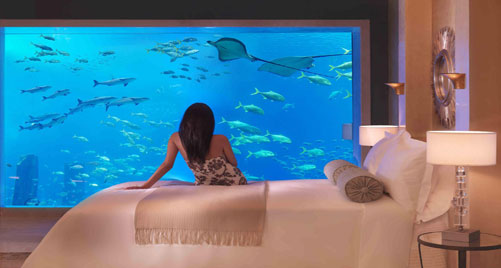
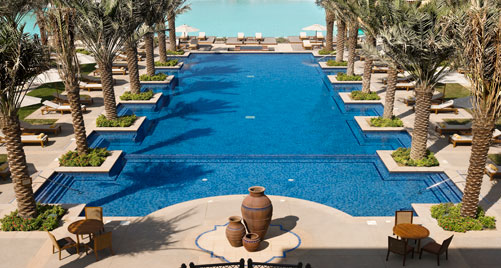
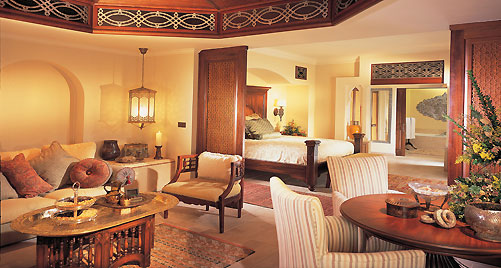
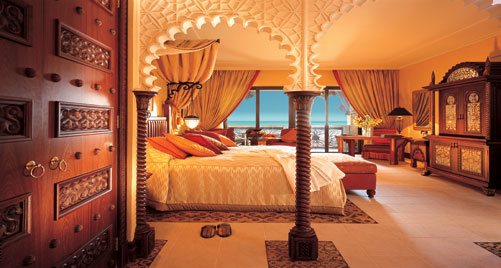
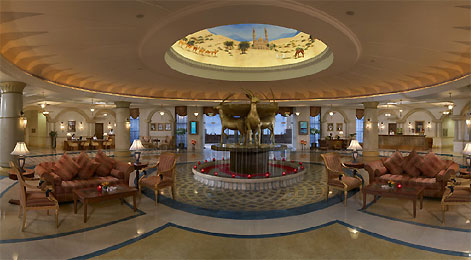
Appendix 2: Geographical milieu of Dubai
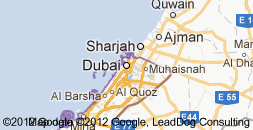
Appendix 3: The Palm Island in Dubai
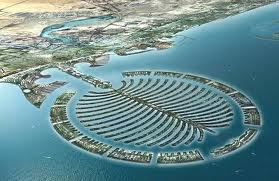
Appendix 4: Dubai’s Night skyline
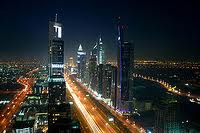
Appendix 5: Dubai’s 20 towers
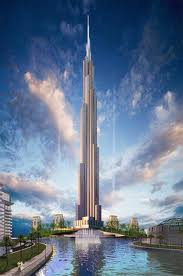
Appendix 6: Dubai’s wild Wadi
